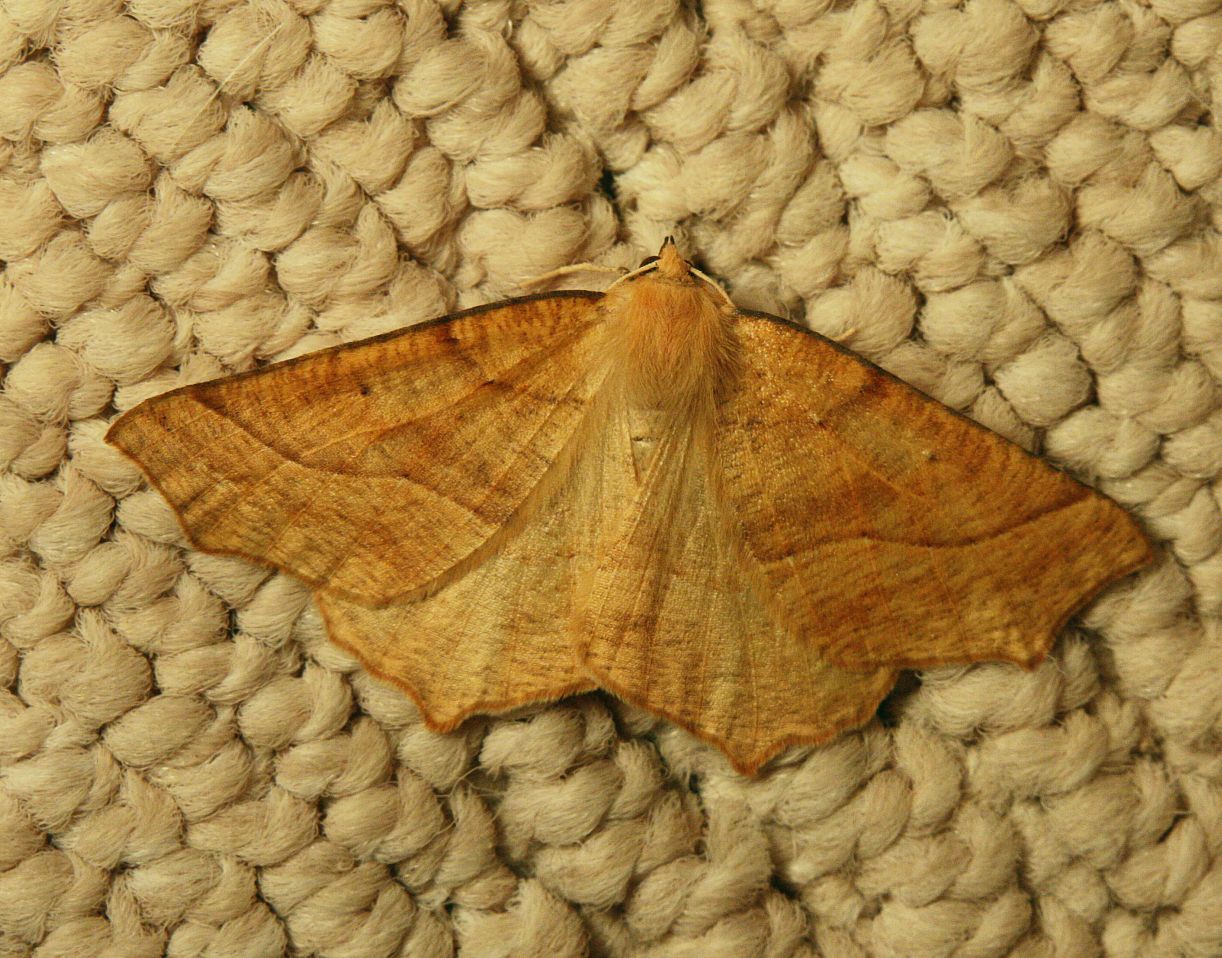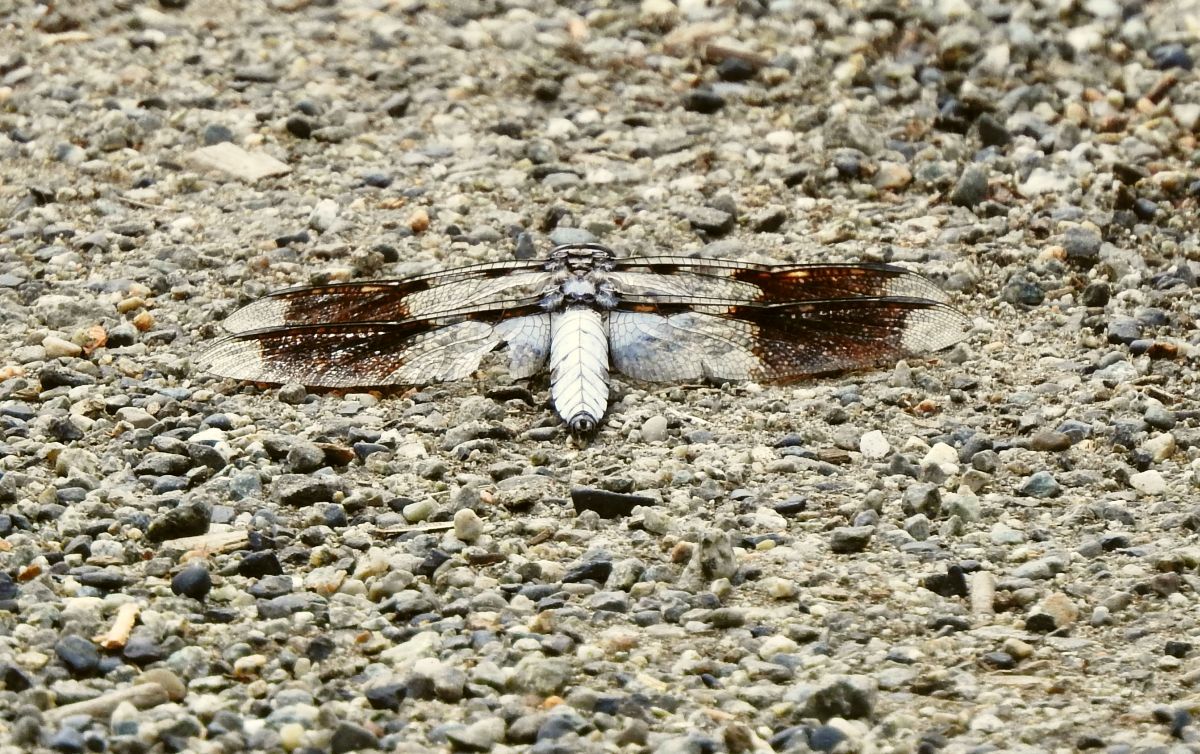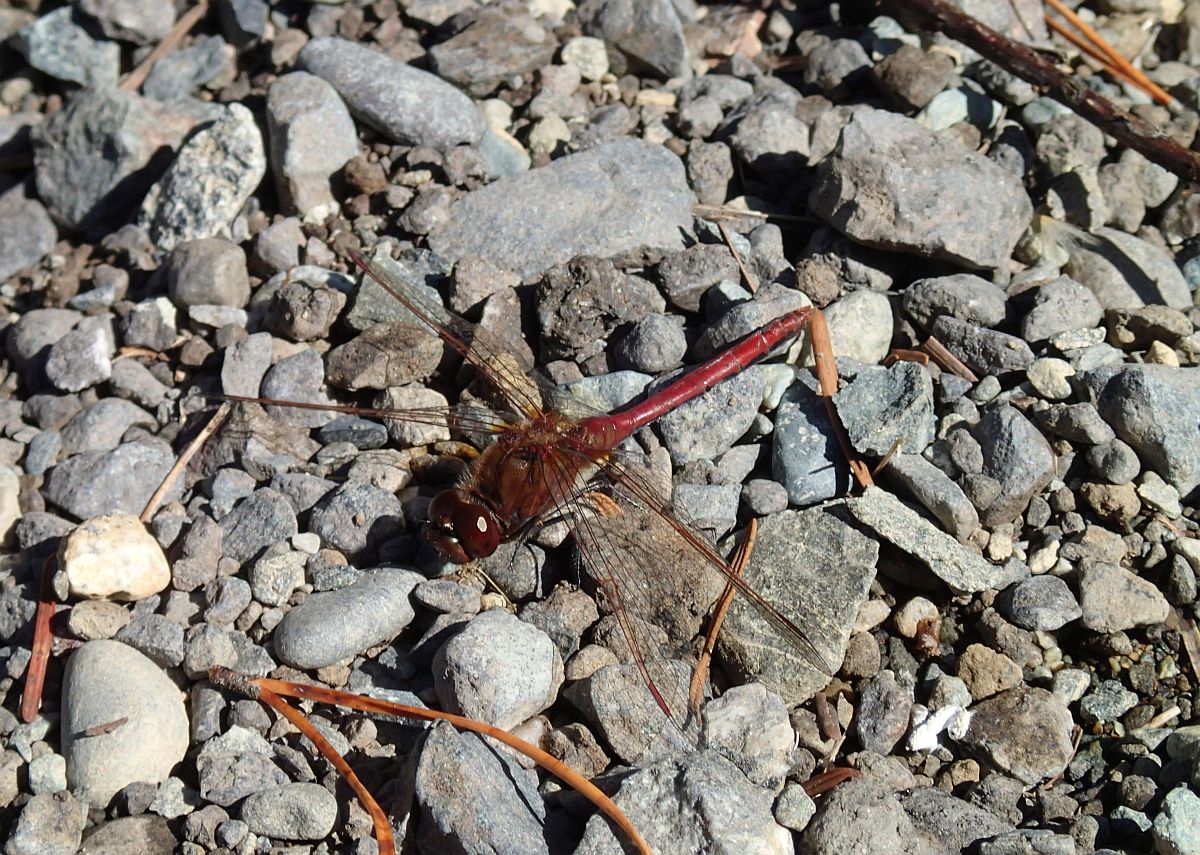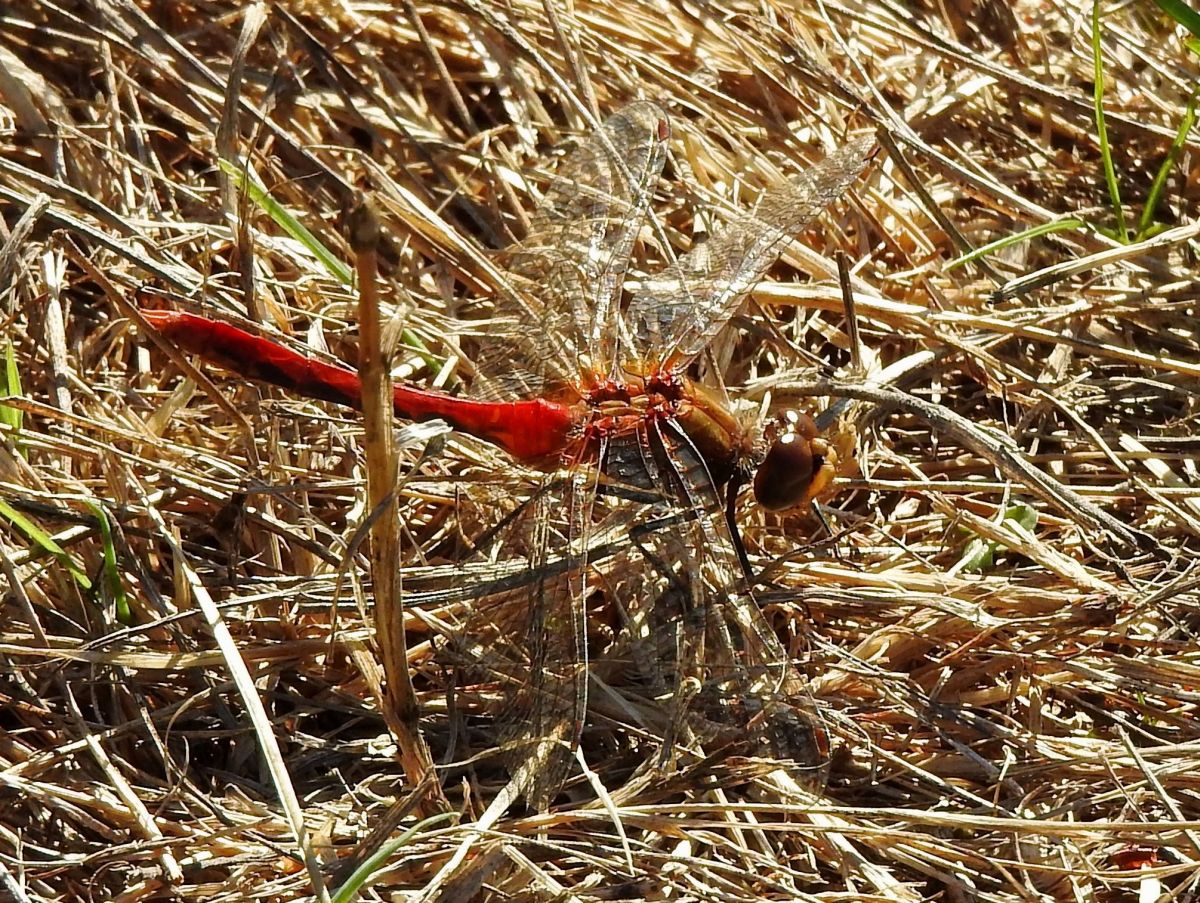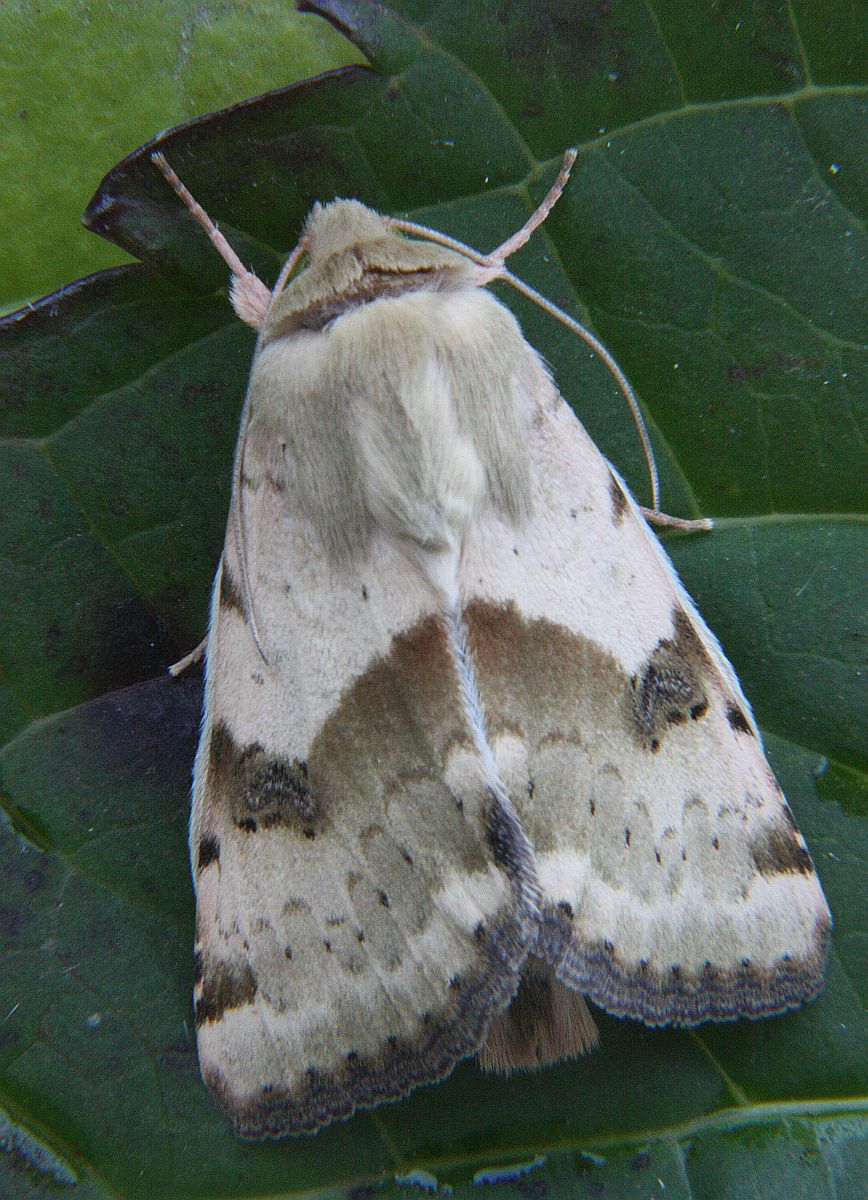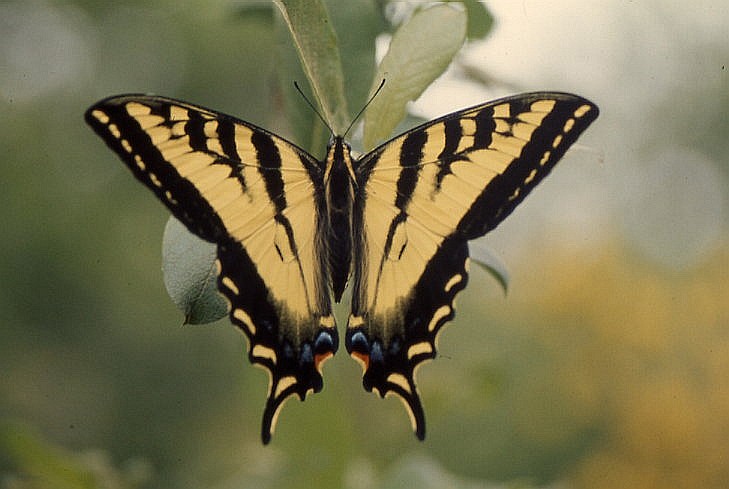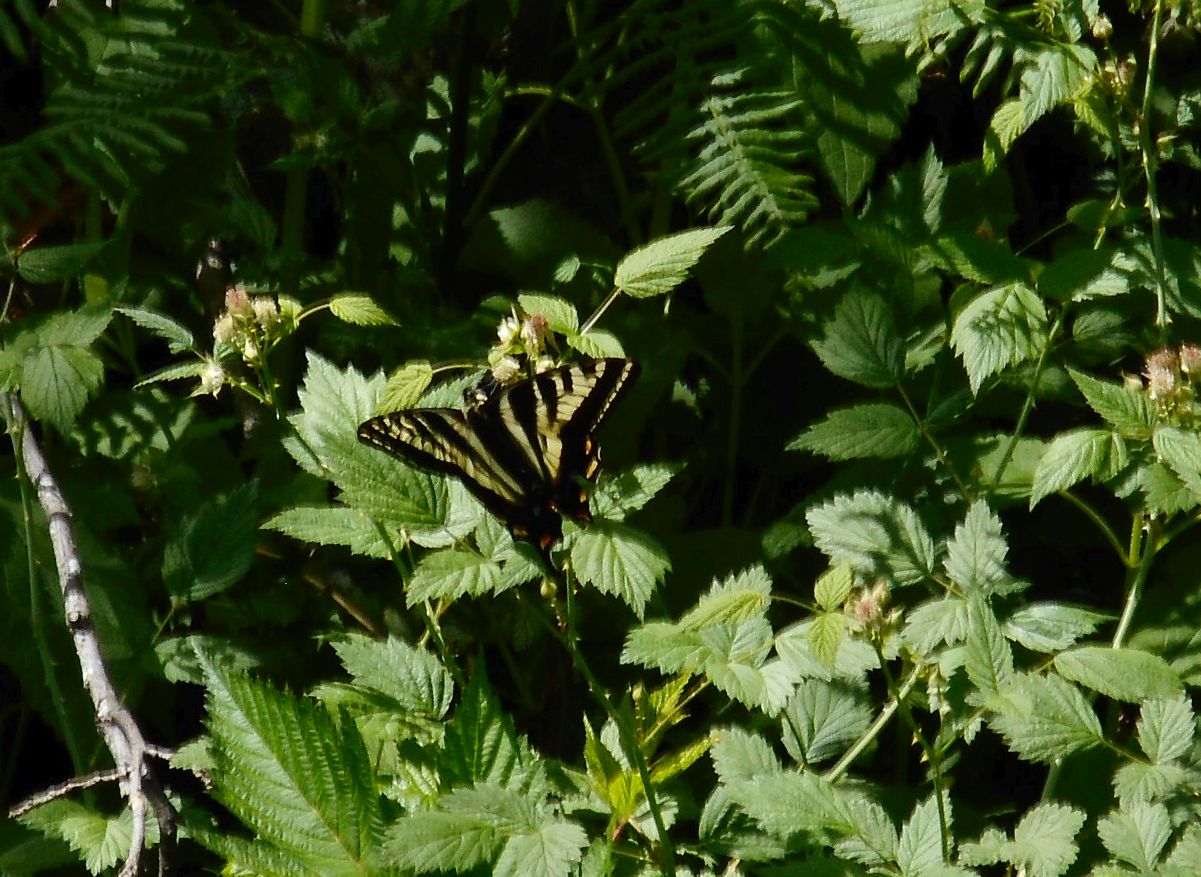2018 October 8
Thanksgiving Day is perhaps a good day for me to give thanks to all the many contributors to this site, to the experts who helped so willingly with the identifications, and to whomever or whatever you believe in that gave us all these wonderful invertebrate creatures to marvel at.
The butterfly season is probably now really over (but keep your eyes open – you never know), but there are still lots of invertebrates around, and this site will remain open for contributions.
Libby Avis spotted a geometrid caterpillar on Pearly Everlasting on Mount Arrowsmith on October 6. It matches the colour of the flowers perfectly. It is almost certainly a pug (Eupithecia sp.), but I don’t think we can go beyond that.

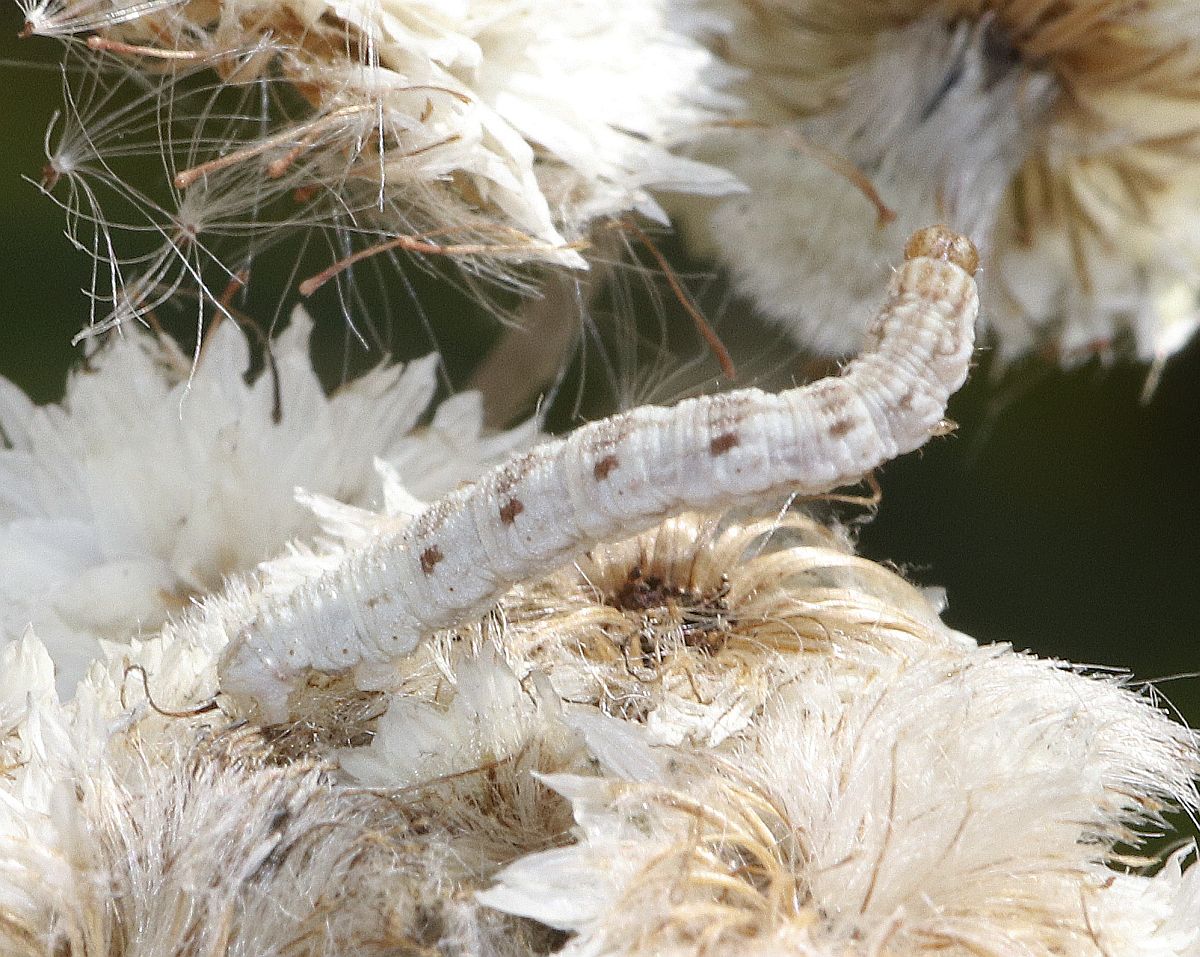
Eupithecia sp. (Lep.: Geometridae) Libby Avis
Jeremy Tatum writes: This American Tissue Moth was at my Saanich apartment this morning:

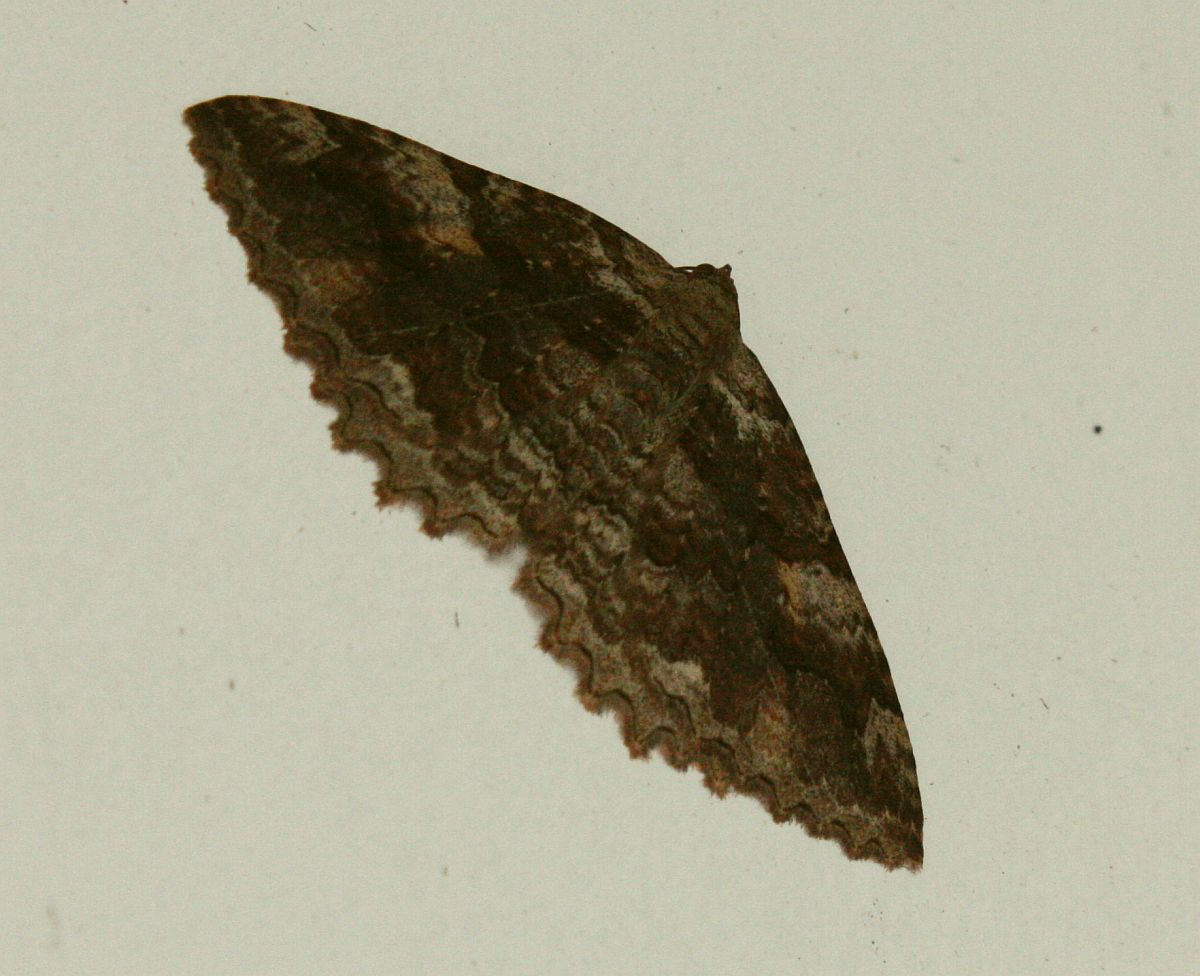
American Tissue Moth Triphosa haesitata (Lep.: Geometridae) Jeremy Tatum
Rosemary Jorna writes: This beetle was on the trail near Camp Thunderbird on October 6. Thanks to Scott Gilmore for identifying it as Scaphinotus angusticollis.


Scaphinotus angusticollis (Col.: Carabidae) Rosemary Jorna
Jeremy Tatum writes: In the May 28 evening Invert Alert, we posted pictures of a snakefly photographed by Andrew Simon on Galiano Island. We had to struggle with the identification of an insect from this not-very-familiar Order. Now we are grateful to Chris Ratzlaff of the Spencer Entomology Museum, who has identified it as Agulla assimilis. We have added this label to the May 28 evening entry, together with some remarks by Dr Ratzlaff.

